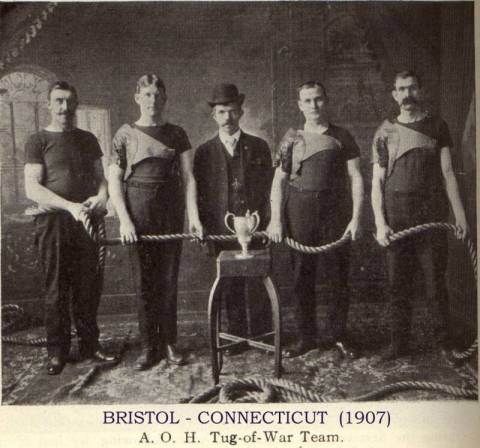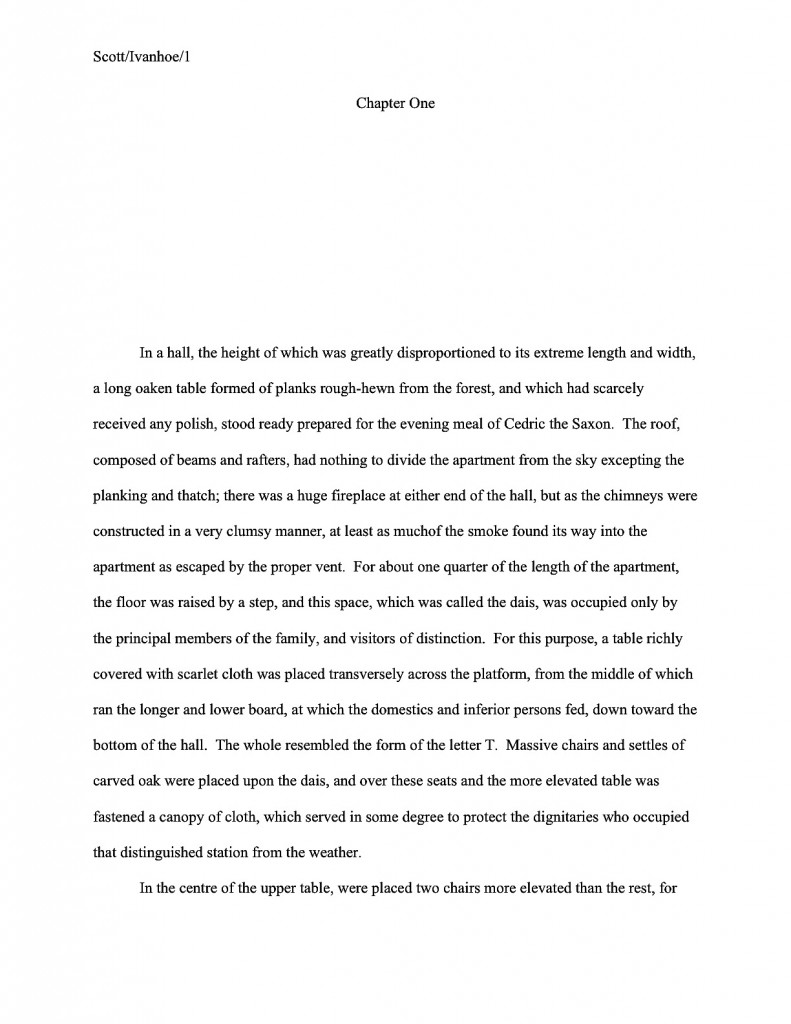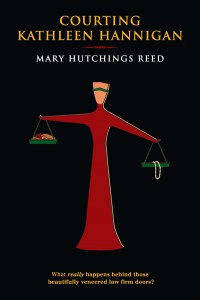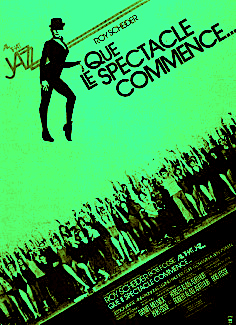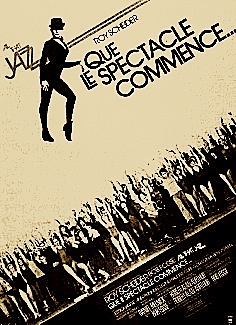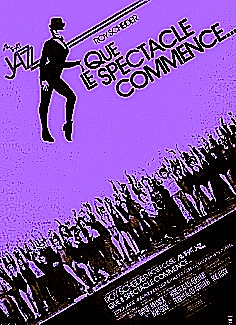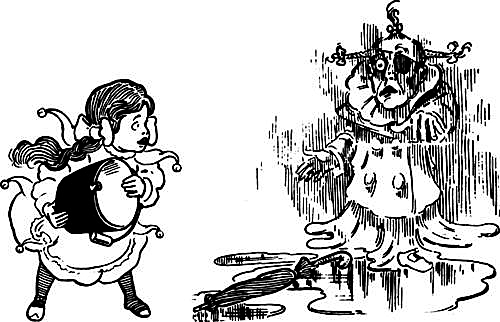
I’m completely exhausted today, campers. For the past couple of days, I have been sneaking revision tips into my ongoing series on how books do and don’t get published in the United States these days. I was being clever, you see: I had been running a series on self-editing all throughout December, and since I know that many of you are planning to rush requested manuscripts and queries out the door just as soon as the annual New Year’s Resolution Querying Avalanche wraps up in a few weeks, I didn’t want those who have been hanging out here at Author! Author! for a while to get bored while I was running through the basics for the benefit of all of those New Year’s resolution queriers.
Welcome, those of you new to the game, by the way. I’m delighted that you have decided to join us. Pull up a chair and stay a while.
The result of my trying to address both audiences has been some marathon posts, as you may have noticed over the last couple of days. And frankly, some of my means of marrying these disparate topics have been less than subtle; yesterday, if memory serves, I simply started a new section in boldface.
So today, I’m not even going to try to find a clever way to spring editing advice upon you. Today, we’re going to be opening with it, because it’s one of the most important things for any aspiring writer — new to the game or old hand — to understand about how submission works.
Professional readers like agents, editors, and contest judges do not read like other people; their eyes are trained to zero in on typos, redundancies, and grammatical problems. Unlike regular readers, who tend to note problems and move on, the pros usually just stop reading when they encounter a writing concern.
Why is this vital for every writer who ever intends to query an agent, submit to an editor, or enter a literary contest to know? Because it means that if page 1 is full of typos, it just doesn’t matter if the writing on page 50 is magnificent. A professional reader like Millicent the agency screener is not very likely to keep reading long enough to find out.
That massive sideways shift in the airspace above the English-speaking world was legions of long-time queriers and submitters rolling their respective eyes. “That’s today’s self-editing tip, Anne?” they scoff collectively. “That I should proofread every single syllable of every page I plan to submit, including my query letter, before sending it out? Isn’t that, you know, How to Get Published 101?”
Yes and no, eye-rollers. Yes, I am bringing this up because I must assume that at least some of the writers reading this are new to the information. No, because I’m about to raise the proofreading bar:
Proofread — not just spell-check — every syllable of every page intended to be seen by professional readers. Read it IN HARD COPY. Not just immediately after you complete writing it, but after every revision as well.
Seem like a lot of work? It is, but it’s the only way to assure that any revision is complete.
Rolling your eyes again? Go ahead, but you wouldn’t believe how often Millicent finds herself confronted with paragraphs that begin in one tense and end in another, pages from UK- and Canada-based writers that sometimes exhibit British spellings and sometimes American, and stories set in Slovenia for the first 30 pages and Slovakia thereafter.
And don’t even get me started on how frequently contest entries have obviously not even been spell-checked since their last revision. Or, indeed, at all.
Since I toil in an industry where every detail is expected to be correct before anyone else claps eyes on one’s work — and so do you, incidentally, if you intend your writing for publication — I am perpetually astonished by this kind of “Oh, well, close enough!” attitude. Close enough is not good enough.
Why, campers? Shout it along with me now: missing words, typos, and formatting inconsistencies drive people who read manuscripts for a living completely nuts.
The ones who are good at their jobs, anyway. To a detail-oriented professional reader, a misspelled word or grammatical error is just as jarring as a brick thrown through his office window or long fingernails drawn down a blackboard.
Worse, actually: to him, those types of easily-preventable errors just seem unprofessional, the sign of a writer who thinks, “Oh, well, close enough!”
Admittedly, that may not be an entirely fair assessment of a submission or contest entry, since writers who care a great deal about their work are often in a terrible hurry to get them out the door and into the mail, but nevertheless, I can guarantee you that on any given minute of any given New York City workday, some Millicent screening submissions (or even queries, sacre bleu!) will be muttering, “Doesn’t this writer ever read his own work?”
Astonishingly, many don’t. Aspiring writers savvy enough to sit down with a hard copy of their manuscripts, a sharp pencil, and a warm, possibly caffeinated beverage represent a tiny minority of the submitting public, I’m sorry to report.
Oh, most will take a gander at a scene or chapter immediately after they compose it, of course, but not necessarily after revising it. Let’s face it, writers are prone to tinkering with already-composed pages, moving text around, sharpening dialogue, tightening pacing, and so forth. There’s nothing inherently wrong with tendency, of course, but the cumulative result of even a handful of miniscule changes in a scene can often be a paragraph, scene, or chapter that does not read with the consistency of a smooth, continuous narrative.
Consistency of voice is one of the hallmarks of the professional writer, so it genuinely pains me to report just how infrequently revising writers make larger changes with absolute accuracy throughout a manuscript. Every editor — and Millicent, and contest judge — has a few amusing stories about the protagonist’s brother named Joe in Chs. 1, 4, and 6, Jim in Chs. 2, 3, and 17, and Jack everywhere else.
As I said, I’m including the editing tips primarily for those at the submission stage, but please do not shrug off this advice if you happen to be in the early writing stages of a book. The sooner you start setting aside some serious time to read your own work, the better — and the less likely you are to fall into the trap of assuming, as too many submitters and contest entrants apparently do, that what you think is on the page is precisely what is there, despite all of that tinkering.
For a professional writer, constant re-reading is simply part of the writing process. Clutching a warm beverage while you peruse is optional, naturally.
Now, if you’ll excuse me, I’m just going to toss this handy brick through that fetching window, to alert you that I’m about to switch the subject back to the basics.
For the last couple of posts, I’ve been attempting to give writers brand-new to the daunting challenge of trying to get their books published — and writers at every other stage of experience as well — an overview of how a book’s interaction with a major publisher actually works. Too many aspiring writers believe, mistakenly, that all that’s necessary for a book to get published is to write it — and not all that grammatically. However, as any author whose first book came out within the last decade could tell you, bringing one’s writing to the publishing industry’s attention can be almost as much work as the composition process — and has been known to take just as long or longer.
Sorry to be the one to break it to you, but it’s vital to understand that extended, frustrating, and difficult roads to publication are the norm for first books these days, not the exception, regardless of the writing quality of the manuscript.
Although, naturally, those free of typos enjoy a considerable advantage. I just mention.
Those of you who have been rejected before have been shaking your heads in disbelief for the last couple of paragraphs, haven’t you? Please don’t: clinging to the common writerly misconception that if writing is any good, it will always be picked up by the first or second agent who sees it, or that a manuscript that doesn’t find a publisher within the first few submissions must not be well-written, is a sure road to discouragement. Since the competition in the book market is fierce by the standards of any industry, realistic expectations are immensely helpful in equipping even the most gifted writer for the long haul.
Knowing how tough the competition and how closely professional readers scan pages can also be hugely beneficial in tracking down and working well with the helpful friend who will be toting your manuscript to publishers for you, your agent. You know, that helpful soul that a writer needs these days in order to have any realistic hope of getting published by a major U.S. publishing house.
So how does a writer go about acquiring this valuable assistant? Unless one happens already to be intimate friends with a great many well-established authors, one has two options: verbally and in writing. Since most aspiring writers take the written route, I’m going to talk about it first.
Before we begin, another brick-through-the-window interruption: the following are an aspiring writer’s only options for calling a US-based agent’s attention to his or her work. Picking up the phone and calling, stopping them on the street, or other informal means of approach are considered quite rude in the industry.
As is mailing or e-mailing a manuscript to an agent without asking first if s/he would like to see it, by the way; this is generally considered an instant-rejection offense. Unlike in the old days we’ve been discussing over the last couple of posts, simply sending to an agent who has never heard of you will only result in your work being rejected unread: uniformly, agencies reject submissions they did not actually ask to see (known as unsolicited submissions).
Is everyone clear on why appearing rude is not in a writer’s interest? Good. Let’s move on to the accepted courteous means of introducing yourself and your book.
Approaching an agent in writing: the query letter
The classic means of introducing one’s book to an agent is by sending a formal letter, known in the trade as a query. Contrary to popular belief, the query’s goal is not to convince an agent to represent the book in question — no agent is going to offer to represent a book or proposal before she’s read it — but to prompt the agent to ask the writer to send either the opening pages of the manuscript or the whole thing. After that, your good writing can speak for itself, right?
Think of the query as your book’s personal ad, intended to pique an agent’s interest, not as the first date.
Always limited to a single page in length, the query letter briefly presents the agent with the bare-bones information s/he will need in order to determine whether s/he wants to read any or all of the manuscript the writer is offering. A good query should include, but is not limited to, the following — and no, none of these are optional:
*Whether the book is fiction or nonfiction.
You’d be surprised at how often queriers forget to mention which.
*The book category.
Basically, the part of the bookstore where the publishing book will occupy shelf space. Since no agent represents every kind of book, this information is essential: if an agent doesn’t have connections with editors who publish the type of book you’re querying, he’s not going to waste either your time or his by asking to see it. (For guidance on how to determine your book’s category, please see the BOOK CATEGORIES listing.)
It’s also a good idea, but not strictly required, to point out who might be interested in reading your book and why; an agent is going to want to know that at some point, anyway. Of course, I’m not talking about boasting predictions like, “Oh, Random House would love this!” or “This is a natural for Oprah!” (you wouldn’t believe how often agents hear that last one) or sweeping generalizations like, “Every woman in America needs to read this book!” Instead, try describing it the way a marketing professional might: “This book will appeal to girls aged 13-16, because it deals with issues they face in their everyday lives. (For tips on figuring out who your book’s audience might be with this much specificity, please see the IDENTIFYING YOUR TARGET MARKET category at right.)
*A one- or two-paragraph description of the book’s argument or plot.
No need to summarize the entire plot here, merely the premise, but do make sure that the writing is vivid. For a novel or memoir, this paragraph should introduce the book’s protagonist, the main conflict or obstacles she faces, and what’s at stake if she does or does not overcome them. For a nonfiction book, this paragraph should present the central question the book addresses and suggest, briefly, how the book will address it.
*The writer’s previous publishing credentials or awards, if any, and/or expertise that renders her an expert on the book’s topic.
Although not necessarily indicative of the quality of a book’s writing, to an agent, these are some of your book’s selling points; the writer’s expertise is what’s known as aplatform. For tips on figuring out what to include here, please see the YOUR BOOK’S SELLING POINTS category. (In case I’m being too subtle here: the archive list is your friend; please consult it.)
*Some indication of why the writer thinks the agent to whom the letter is addressed would be a good representative for the book.
Agents don’t represent books in general: they represent specific varieties. Since they so often receive queries from aspiring writers who are apparently sending exactly the same letter indiscriminately to every agent in the country, stating up front why you chose to pick THIS agent is an excellent idea. No need to indulge in gratuitous flattery: a simple since you so ably represented Book X or since you represent literary fiction (or whatever your book category is) will do.
Should any of you have been considering querying every agent in the country, be warned: it’s a sure route to rejection, especially if a writer makes the mistake of addressing the letter not to a specific person, but Dear Agent. Trust me on this one.
*The writer’s contact information.
Another one that you might be astonished to learn is often omitted. Yet if the agent can’t get ahold of you, she cannot possibly ask to you to send her your manuscript, can she?
*A stamped, self-addressed envelope (SASE) for the agent’s reply.
This isn’t part of the letter, strictly speaking, but it absolutely must be included in the envelope in which you send your query. Yes, even if you tell the agent in the query that you would prefer to be contacted via e-mail.
Why is this rule inviolable? Queries that arrive without SASEs are almost universally rejected unread.
So no exceptions, unless the agent actually tells you not to include it. (As some agencies now do; check the agency’s website. Oh, and for tips on the hows and whys of producing perfect SASEs, please see the SASE GUIDELINES category on the list at right.)
Is there more to constructing a successful query letter than this? of course there is — no matter what anybody tells you, there’s no such thing as a foolproof query formula that will successfully pitch any book it is possible for a writer to conceive. Yet since I’ve written extensively about querying (posts you will find under the intuitively-named HOW TO WRITE A QUERY LETTER category on the archive list, if you’re interested) and how it should look (QUERY LETTERS ILLUSTRATED), the list above is not intended to be an exhaustive guide to how to write one.
Speaking of realistic expectations, do not be disappointed if you do not receive an instantaneous response to your query. Because a well-established agent may receive 800 to upwards of 1500 queries per week (yes, you read that correctly), it’s not uncommon for a regularly mailed query not to hear back for six or eight weeks. Some agencies do not respond at all if the answer is no. For these reasons, it’s poor strategy to query agents one at a time. (For a fuller explanation of that last point, please see the QUERYING MULTIPLE AGENTS AT ONCE category at right.)
Approaching an agent in writing, part II: the electronic or website-based query
Most of the time, e-querying involves sending pretty much exactly the letter I mentioned above in the body of an e-mail. (For an explanation of some ways e-querying differs from paper querying, please see E-MAILING QUERIES category at right.) Do not send it as an attachment; it will not be opened.
There are advantages to doing it this way: because of the aforementioned slow turn-around times for queries sent via regular mail, increasing numbers of aspiring writers are choosing to send their query letters via e-mail. It’s a significantly less expensive option for writers querying US-based agents from other countries. More importantly for most queriers, if an agency does indeed accept e-mailed queries, the querier tends to hear back a trifle more quickly.
Did the Internet-lovers out there just do a double-take? Yes, it’s true: there are agents who will not read e-mailed queries.
Actually, until quite recently, the VAST majority of US-based agents refused to accept e-mailed queries or submissions; this is, after all, a paper-based business. However, after the anthrax scare of a few years back, many agencies reconsidered this policy, so they would not need to open as many potentially-hazardous envelopes; still others jumped on the bandwagon after e-mail became more popular. However, even today, not all agencies will allow electronic querying: check one of the standard agency guides (if you are unfamiliar with what these are and how to use them, please see the HOW TO READ AN AGENCY LISTING category at right) or the agency’s website.
If it has one.
Yes, seriously. Contrary to widespread assumption, not every agency has a site posted on the web. This means that simply doing a web search under literary agency will not necessarily provide you with an exhaustive list of all of your representation possibilities. (For tips on how to come up with a list of agents to query, check out the FINDING AGENTS TO QUERY category on the list at right. How do I come up with these obscure category titles, anyway?)
If an agency does have a website, it may be set up for queriers to fill out an electronic form that includes some or all of the information that’s in a traditional query letter. While some aspiring writers have landed agents in this manner, I tend to discourage this route, since typically, the word count allowed is sharply limited. (Some agency sites permit as few as 50 words for plot summaries, for instance.) Also, most writers just copy and paste material from their query letters into the boxes of these forms, substantially increasing the likelihood of cut-off words, missed punctuation, and formatting errors.
If you just cringed, remembering what I said above about how people who read manuscripts for a living tend to react to these types of tiny errors: congratulations. Your chances of querying successfully are substantially higher than someone who doesn’t know to conduct intense proofreading upon ANYTHING that’s s/he sends an agent.
Remember, literally every sentence you send a potential agent is a sample of how good your writing is. Regardless of whether you choose to query electronically or via regular mail, it’s in your best interests to make sure that every syllable is impeccably presented.
Which is why, in case you were wondering, written queries were the only means of approaching agents until just a few years ago, and still the means that most of them prefer. (Short of a personal introduction, of course. Writers whose college roommates or best friends from elementary school grew up to be agents enjoy an undeniable advantage in obtaining representation that the rest of us do not enjoy.) If a potential client has trouble expressing himself in writing, is ignorant of the basic rules of grammar, or is just plain inattentive to those itsy-bitsy details I mentioned above, a written query will tend to show it.
To be fair, aspiring writers often prefer to query in writing, because that, after all, is presumably their strength. Besides, there are a lot of very talented but shy writers out there who would infinitely prefer to present their work from a distance, rather than in person. However, direct interaction with an agent is sometimes an option.
Approaching an agent verbally: the pitch
A face-to-face presentation of a book concept to an agent is called a pitch, and it’s actually not indigenous to publishing; it’s borrowed from the movie industry, where screenwriters pitch their work verbally all the time. The reason that the publishing industry has been rather reluctant to follow suit is a corollary of the proof-is-in-the-pudding reason I mentioned above: not everyone who can talk about a book well can write one successfully, just as not every writer capable of producing magnificent prose is equally adept at describing it in conversation.
However, since writers’ conferences often import agents to speak, many set up formal pitching sessions for attendees. Sometimes they charge extra for the privilege; sometimes it’s included in the conference fee. (It’s also occasionally possible to buttonhole an agent after a seminar or in a hallway, but many conference organizers frown upon that. And no matter how much you want a particular agent to represent you, it’s NEVER considered acceptable to attempt to pitch in a conference or literary event’s bathroom. Don’t let me catch you doing it.)
Like the query letter, the purpose of the pitch is not to convince the agent to sign a writer to a long-term representation contract on the spot, but to get the agent to ask the writer to mail him or her chapters of the book. (Contrary to what conference brochures often imply, agents virtually never ask a pitcher to produce anything longer than a five-page writing sample on the spot. Since manuscripts are heavy, they almost universally prefer to have writers either mail or e-mail requested pages.) In order to achieve that, you’re going to need to describe your book compellingly and in terms that will make sense to the business side of the industry.
In essence, then, a pitch is a verbal query letter.
Thus, it should contain the same information: whether it is fiction or nonfiction, the book category, the target audience, any writing credentials or experience you might have that might provide selling points for the book, and a BRIEF plot summary. Most conference organizers are adamant about the brief part: their guidelines will commonly specify that the summary portion should take no more than 2 minutes.
Did I just hear all of you novelists out there gulp? You honestly do not have a lot of time here: pitch sessions may range in length anywhere from 2-15 minutes, but most are 5-10.
Usually, they are one-on-one meetings in a cramped space where many other writers are noisily engaged in pitching to many other agents, not exactly an environment conducive to intimate chat. At some conferences, though, a number of writers will sit around a table with an agent, pitching one after the other.
Yes, that’s right: as if this situation weren’t already stressful enough, you might have to be doing this in front of an audience.
While the opportunity to spend telling a real, live agent about your book I’m going to be honest with you: the vast majority of aspiring writers find pitching absolutely terrifying, at least the first time they do it. Like writing a good query letter, constructing and delivering a strong pitch is not something any talented writer is magically born knowing how to do: it’s a learned skill. For some help in learning how to do it, please see the HOW TO PREPARE A PITCH category on the list at right.
Those are the basic three ways for writers to approach agents; next time, I’ll talk a bit about what happens to a query after it arrives at an agency, how agents decide whether to ask to see a manuscript, and the submission process. After that, we’ll loop the agent segment of this series back into the earlier discussion of how the big publishing houses acquire books, before moving on to brief overviews of how smaller and independent publishing houses work differently (and how they work similarly) and self-publishing.
Sounds like fun, right? As always, if you are looking for in-depth analysis on any of these subjects or step-by-step how-tos, try perusing the category list at right. Since I usually tackle these issues on a much more detail-oriented basis — a hazard of my calling, I’m afraid — I’m finding it quite interesting to paint the picture in these broad strokes.
Yes, this is a lot of information to absorb at once, but this is too complicated a process to be covered adequately in a single-page checklist. Keep up the good work!
